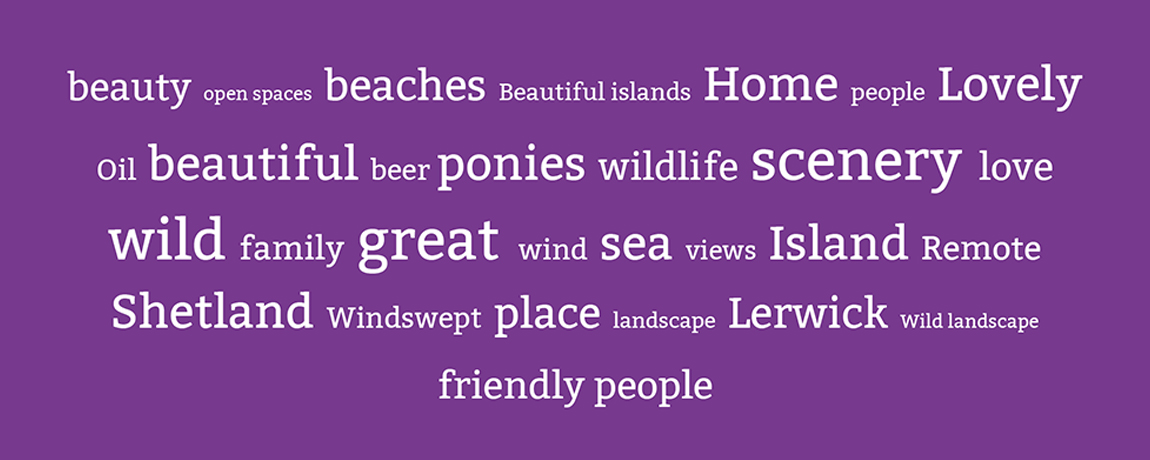Using your location to build your brand
Isla Mercer,
Project Manager at Shaw

Product and service USPs are often much easier to articulate than brand USPs – for example ‘my product uses unique ingredients’; ‘I can offer a service level that my competitors can’t match’. These are an important factor for customers when choosing which business to purchase from, and it resonates with the logical side of their brain.
However, human beings are notoriously bad at logical decision making, and according to Harvard professor Gerald Zaltman, 95 per cent of purchasing decisions are subconscious – and largely driven by emotions. Therefore, your brand USPs, which usually appeal to the emotional side of decision making, are a very important tool for creating an emotional connection with the subconscious part of your customer’s brain.
Determining your brand USPs can be tricky and seeing it from an outsider’s perspective is particularly difficult, especially when, as a business owner, you have to be focused on the day-to-day details that make your business run.
Using location can be a fantastic brand USP, and one that feels very natural to the consumer. The key to really maximising location for your brand is being able to understand what emotions your location evokes in a customer, and then incorporating that into your marketing.
At Shaw, we work with a lot of rural businesses, especially those on Orkney and Shetland. If you’ve lived somewhere your whole life, it is difficult to see it through the eyes of someone else. We recently interviewed over 120 people to get their thoughts on what Shetland meant to them. Below is a word cluster of the most common words that people used in their descriptions:

Even just reading these words conjures up a picture of rugged romanticism which create a very positive emotional response. Incorporating these ideas into your brand and marketing can therefore be very effective.
Luxury and authenticity are important elements of this. ‘Provenance’ has been a hot topic for a few years now, with a growing number of people wanting to know where the products they buy come from and how they’re made. This comes hand in hand with locally made items being thought of as higher quality, and therefore demanding a higher price point.
So, how do you effectively incorporate your location into your branding? Below are some things to consider to be able to do this effectively:
1. Understand what emotional response your location creates
Undertake some research through simple surveys to get an idea of what people think of when they think of your location. The answers will likely surprise you! Creating a word cloud like the above helps you pick out the most common themes on which you can then focus.
2. Communicating effectively
Now you have a clearer picture of what your location means to people, you need to communicate this to potential customers so they connect your brand with their love of the location. Think about how your location inspires your product, or how you do things a certain way because of your location. What may seem like a nuisance to you can add to the desirability for others.
3. Consistency
Your brand must be consistent at every possible touchpoint a consumer has with your business – from the website, to a physical premises, to how you answer your phone, to your business card. ‘Beauty’ is one of the words in the word cloud above, and so remember that everything you create must embody this. It means you may have to budget higher for things like higher quality, textured paper for printed items, but it will pay dividends as you can justify charging more for your products/services as they will be seen by customers to be better quality and worthy of the price point.
4. Photography and film are vital
In order to elicit the emotional response wanted from customers, they must be reminded of the landscape and place that they’re buying into, so visual assets are needed. Film and photography are highly effective ways to remind people of places they’ve been to, or help build upon the picture they already have in their head. Getting a wide range of film footage which can be cut and edited into longer and shorter pieces is a good way to ensure maximum use out of filming.
5. Quality
Cutting corners is always tempting, but as discussed above, consistency is key, and making sure everything is of the highest quality ensures that your brand matches the image people have in their head when they think of the location. If you are restricted by budgets then focus on the ‘less is more’ approach whereby you strategically tackle what is likely to make the most impact first and make sure that is of the highest quality – then bring in additional elements as budgets allow.
An example of a brand which really makes the most of their location in their brand and marketing is Harris Gin. Harris Gin has become ‘the’ gin that everyone wants on their shelf, the beautiful bottle, the captivating story behind it, it’s exclusivity, and the attention to detail with all their marketing has come together to create a highly sought-after, luxury brand that is known worldwide. Their location is at the heart of everything they do, from small batch production, to being inspired by their surroundings, to their commitment to providing local jobs.
If you would like to see how you could use your location more effectively, get in touch and we’d be happy to help.
Drop us an email at edinburgh@shaw-online.com
